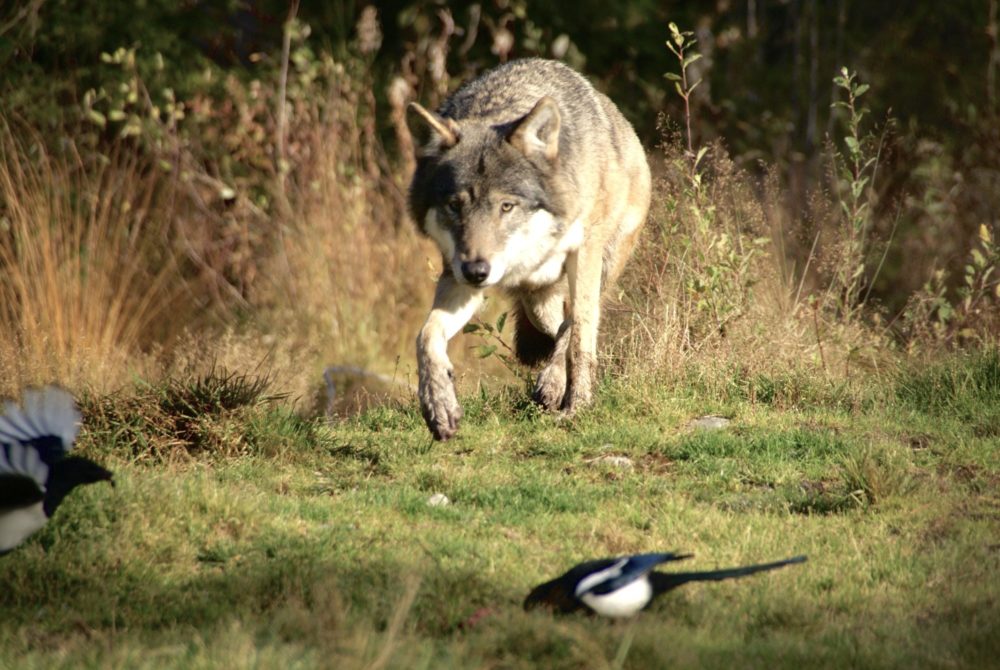Wolf myths
Written by Nicklas Iversen | Last edited 29. September 2021
There are a great many myths surrounding the wolf. Both old and new. It is not always easy to know what is fact and what fiction. On this page, we will take a closer look at the modern myths and common misconceptions about wolves, and find out what the truth is. Maybe you have believed a myth.
“THE WOLF DOES NOT REALLY BELONG HERE”
This notion is actually based on another myth: that the wolf has been introduced by man. This myth has popped up in virtually every country where wolves have returned after an absence. The idea is simple: animals cannot cover such enormous distances on foot, can they?
In Sweden, there was also something called ‘Project Varg’. This project took place in the 1970s and was aimed at breeding wolves in zoos for release into the wild. It never happened. Wild wolves beat the project to it! They immigrated from Finland/Russia and established themselves all on their own.
The extensive collection of DNA has shown that all the wolves we have today are descended from the same five wolves of Finnish/Russian origin.
GPS tracking of wolves has shown that they can roam over huge distances. So strolling in from Russia is no particular challenge for the wolf.
In days gone by, we used to have wolves throughout Scandinavia, and wolves have always roamed to and between Scandinavia and Finland/Russia. So it is nothing new.
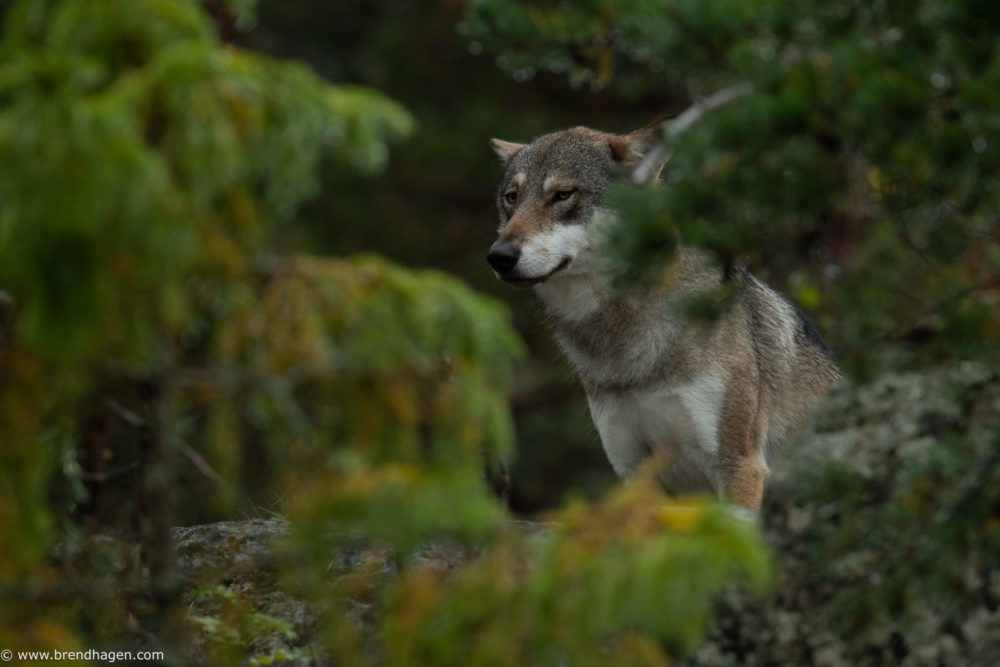
“THE WOLF IS A HYBRID”
We often hear this myth when wolves have been seen near built-up areas and humans. When people say that the wolf is a hybrid, they mean that it is a cross between a wild wolf and a domestic dog.
Above all, this is incorrect use of the term hybrid. A hybrid is a cross between two different species. Like mating a horse and donkey to get a mule. The dog is considered to be the same species as the wolf. It is possible to have different subspecies within a species, and the dog is regarded as a subspecies of the wolf. This does not make it a separate species, so wolves and dogs cannot produce hybrids in the correct sense of the word. The most correct term might be mongrel, which is used for mixed-breed dogs.
It is quite possible for wolves and dogs to breed and have offspring, as technically the two animals are the same species. But it does not happen very often. And in the small number of cases where this has been discovered, the animals were shot. As happened with the Moss pack in the early 2000s.
There is extensive DNA collection from wolves every single year, and we still have not found any evidence of such ‘wolfdogs’ padding about the forests. Much less that they have survived long enough to have cubs themselves.
It is not particularly unusual for wolves to be in the vicinity of houses and built-up areas from time to time, even if such behaviour is undesirable. It does not mean that the wolf is either tame or a wolfdog.
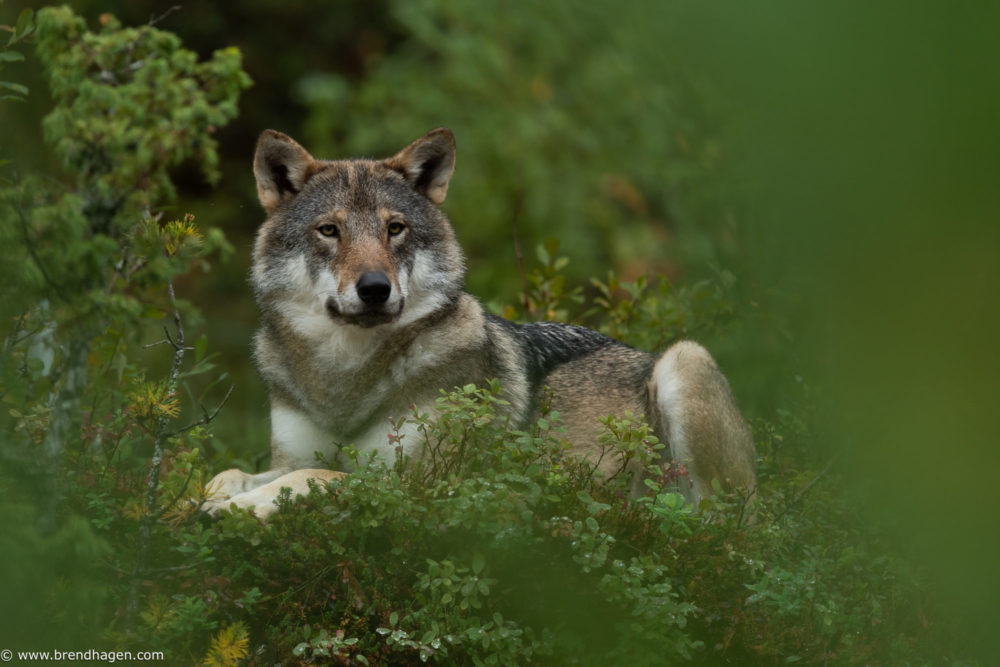
ALPHA ANIMALS
This myth is especially difficult to dispel, as so many nature programmes, documentaries, zoos and the like present it as true.
The myth is that a wolf pack is led by an alpha pair, which are the strongest animals in the pack and have fought their way to power. If they became weak, they could be challenged by other pack members. These can be both wolves that have joined the pack from outside or the offspring of the alpha pair. According to the myth, the pack has a strict hierarchy.
This is rubbish, of course. When it comes to wild wolves at any rate.
The myth came about after researcher Rudolph Schenkel investigated wolf behaviour. The problem was that the wolves he investigated were in Basel Zoo in Switzerland. As in most zoos, the animals there were fenced in, so the wolves were unable to do what they would have done in the wild and leave home when they reached adulthood.
Rudolph Schenkel’s findings in the 1940s were further reinforced by wolf researcher David Mech, who published a best seller about wolves in 1970. For his part, David Mech subsequently tried in vain to dispel the notion of an alpha pair, concluding as early as 1999 that a typical wolf pack consists of two parents with cubs.
As David Mech himself discovered, the truth of the matter is that a wolf pack is made up of a mother, a father and their young. The cubs will leave home when they are grown in order to find a mate to settle down with. The leaders of a wolf pack are therefore quite simply a mother and father. Outside this core family, the wolf is actually very antisocial and will chase off strange wolves.
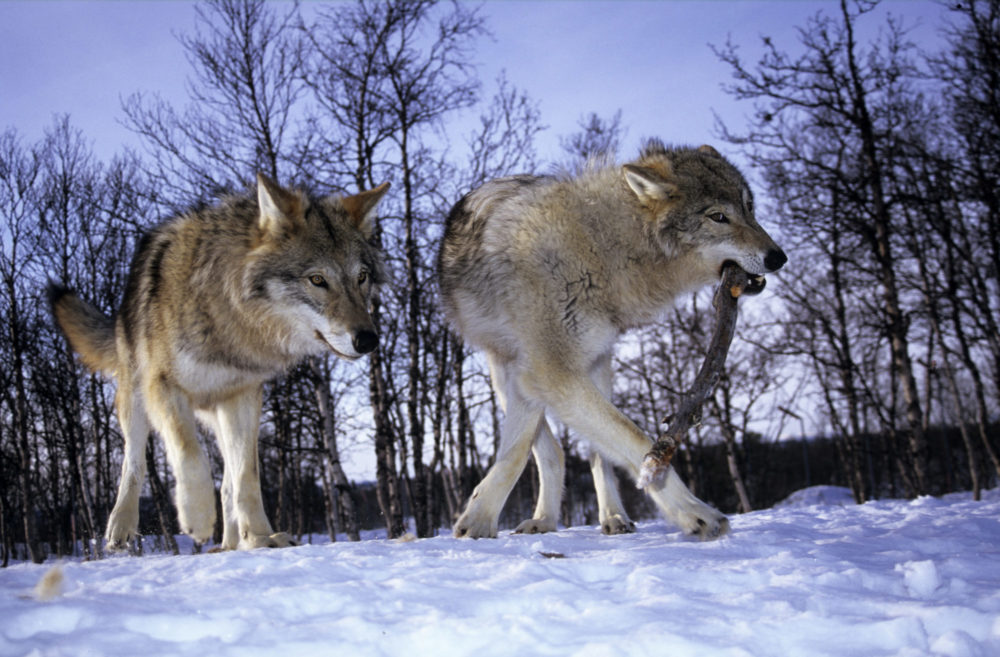
“THE WOLF HUNTS SICK AND WEAK ANIMALS”
Dette er en typisk myte som handler om å gi dyr egenskaper den ikke har. I denne sammenheng blir ulven
This is a typical myth assigning attributes to animals that they do not possess. In this context, the wolf is presented as an animal that deliberately removes sick and weak animals, ensuring that the stock of prey remains fit and healthy.
The truth of the matter is that wolves hunt when they get the chance. And wolves are not especially good hunters either – compared with the lynx, for example. This means that a good proportion of the prey they try to hunt manage to get away – because they are too fast and strong for the wolves. There is therefore a higher probability that the animal the wolves finally manage to kill will not be as fast and strong as the others. In other words, a weak animal.
Weak animals can mean fully fit moose calves just as much as sick animals.
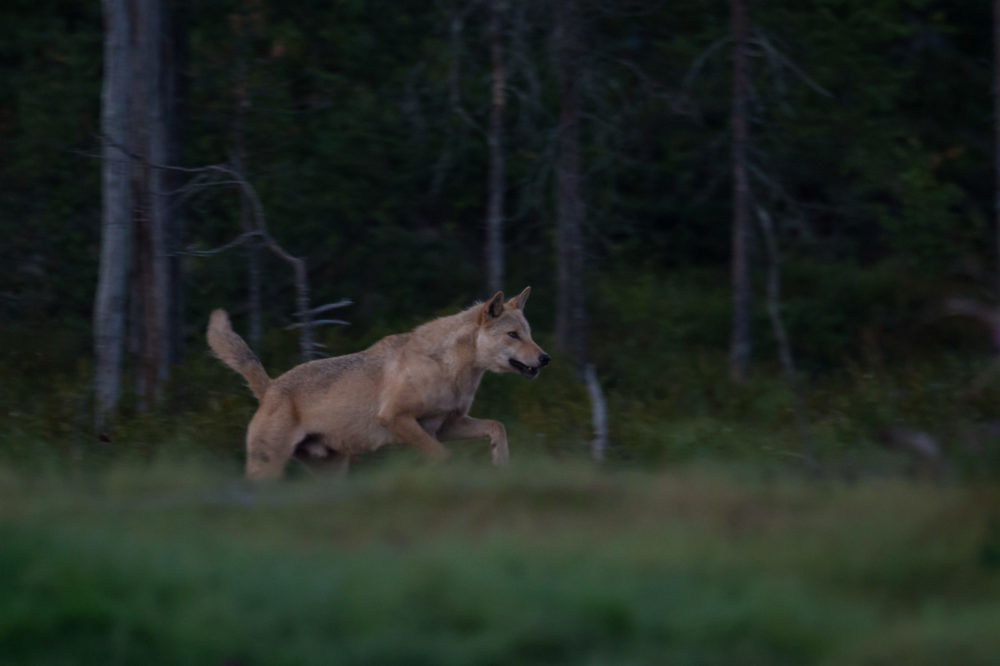
“THE WOLF KILLS FOR SPORT”
This myth is another of those that assigns human motives and attributes to animals – but this time at the opposite end of the scale.
The myth claims that wolves only kill for the fun of it. It comes from cases where wolves have run rampage among flocks of sheep in particular, killing a lot of animals in a short time. And it is not difficult to understand people thinking that the wolf just did it for fun – because it cannot eat that many animals, can it?
The truth is that the wolf is a predator that is naturally programmed to hunt when the opportunity presents itself. A wolf that comes across moose, red deer or reindeer will normally only get one chance, of course. A single animal will be killed, while the rest disappear over the horizon. And the wolf will stay with its prey for several days to eat it up.
To ensure that the wolf hunts when it gets the chance, the wolf’s brain will produce endorphins, hormones that reward the brain when the wolf does something that is good for it. This is not peculiar to wolves, but applies to all vertebrates, including us humans. Have you ever hooked a fish and noticed how ‘wired’ you feel? That is the body’s reward system in full flow. This reward system is designed to make us do what gives us the greatest chance of surviving long enough to have offspring.
So when a wolf comes across a flock of sheep and kills the entire flock, it is not the result of a conscious choice on the part of the wolf to have fun, but rather an unfortunate side effect of the predator’s adaptation to life in the wild. The fact that many predators kill more than they can eat is called “surplus killing”
The reason does not matter much to the farmer who has lost sheep, of course. And we can all appreciate that it is horrible to experience such a thing. But, at the same time, we have to be careful about assigning attributes to wild animals that they do not possess.
This article has been written by Bjørn Henrik Stavdal Johansen, a nature guide at Visitor Centre Carnivore Flå.
